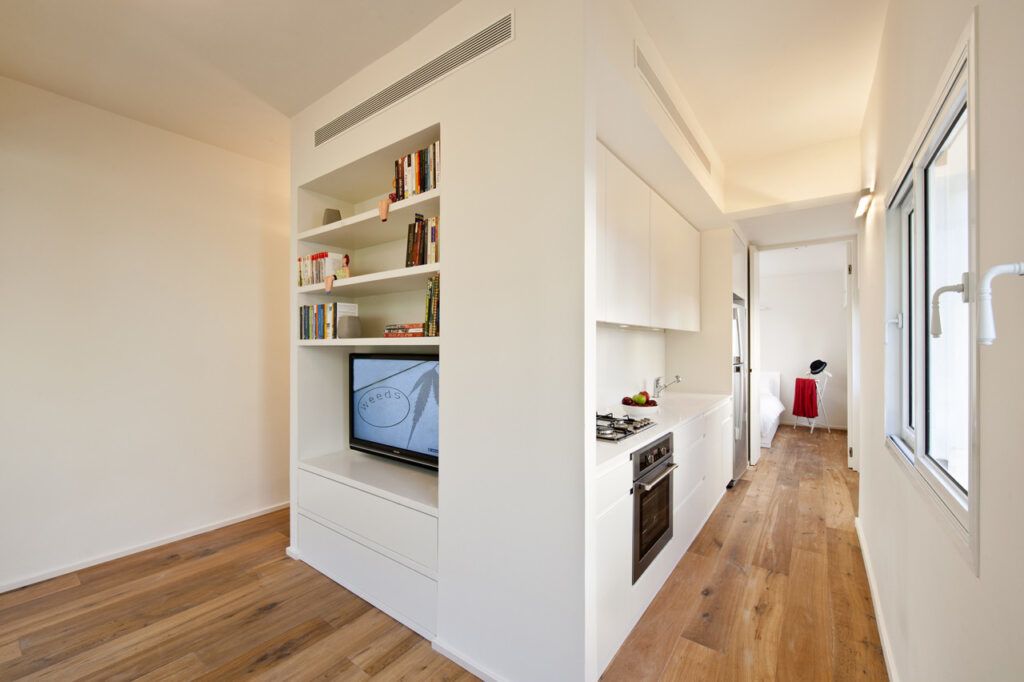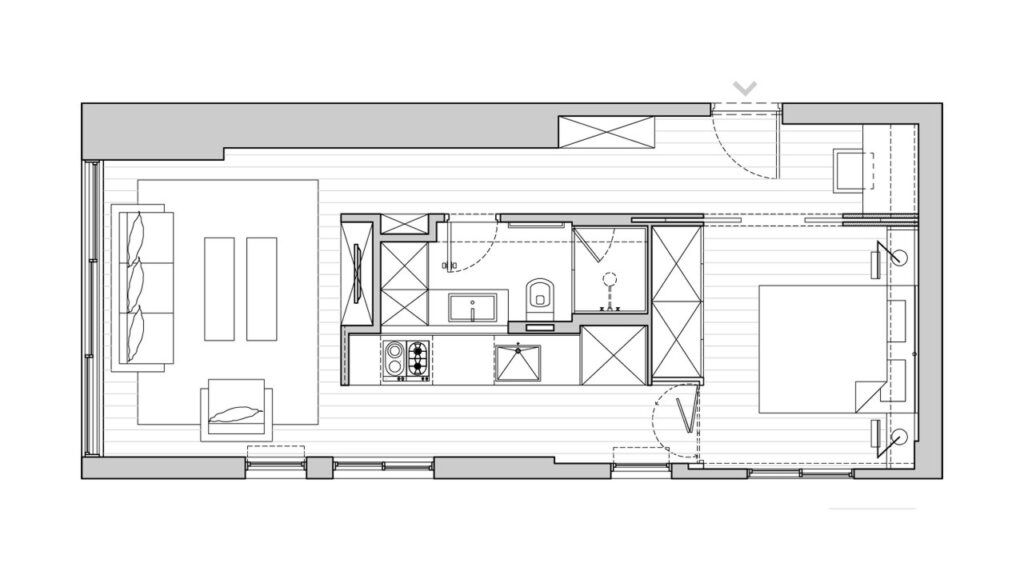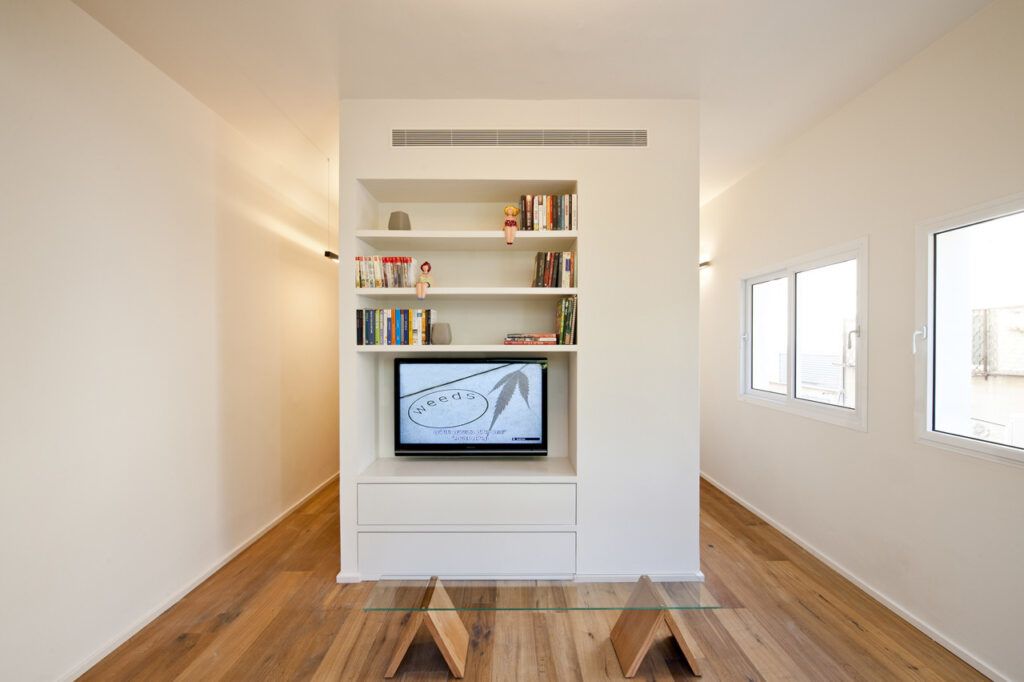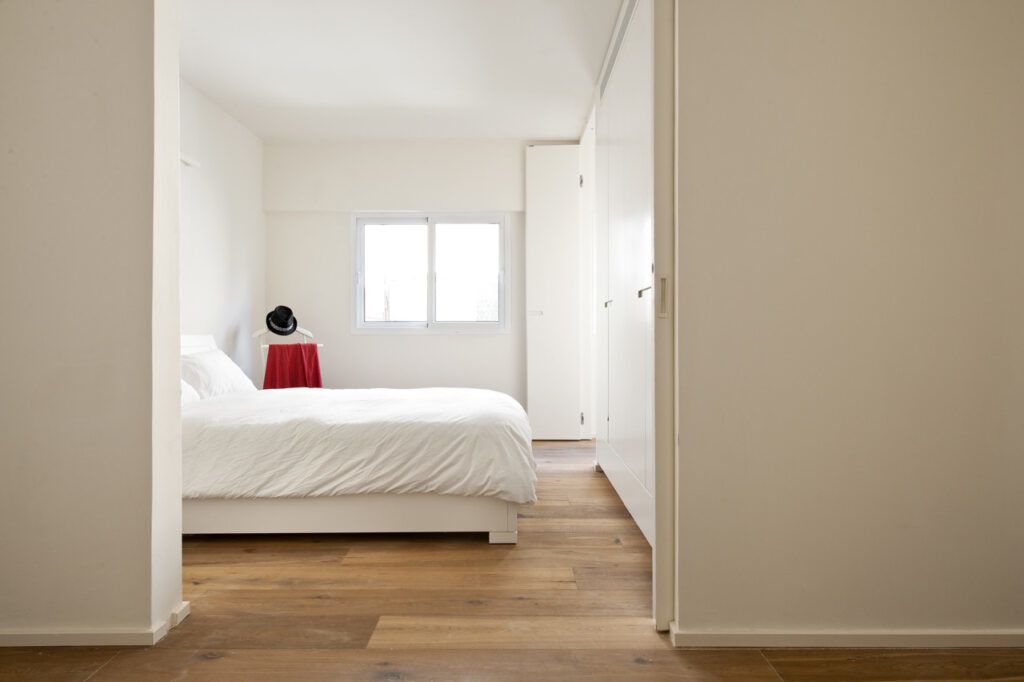Tiny 40-Sq-M Tel Aviv Apartment

In the midst of insanely high housing prices in Tel Aviv, Israel, clients who want to upgrade their living spaces are left with few choices. One client, the owner of a tiny 40 square meter studio, decided to keep her current abode and transform it entirely.

The client wanted to trade in her studio apartment for a one bedroom. Rather than adding walls to divide the space, SFARO Architects added a central command center contained in a cube in the center of the apartment.

The central cube contains storage, a kitchen, a bathroom and the resident’s entertainment gadgets. Sliding doors disappear into the body of the cube when closed and hide its contents when open, letting the resident create different looks for different situations whenever desired.

On either side of the cube are narrow corridors that create a sort of never-ending flow to the living areas. The only walls in the apartment, aside from the central cube, surround the bedroom – but even these can fold or slide out of the way to keep up the effortless flow of the space.

By placing all of the apartment’s functions into one central locations, the architects were able to create a dramatic space that feels much larger than its diminutive 40 square meters.
The renovation turned the small apartment from a studio into a one-bedroom with all of the style and personality of a much larger living space.
“By adding sliding doors that disappear into the cube, the space can be altered according to the time of day and the various needs of the owner, contributing further more to the sense of a multi-functional and multi-layered space,” say the architects.
“SFARO Architects (2009) was founded by architects Nir Rothem and Bosmat Sfadia-Wolf. Our design approach puts architectural planning and real-life problem-solving ahead of aesthetic pleasures and paradigms. We believe in the power of architecture and its ability to aid find better spatial relations between users and programs, whether it be a small apartment or a new neighborhood.”




